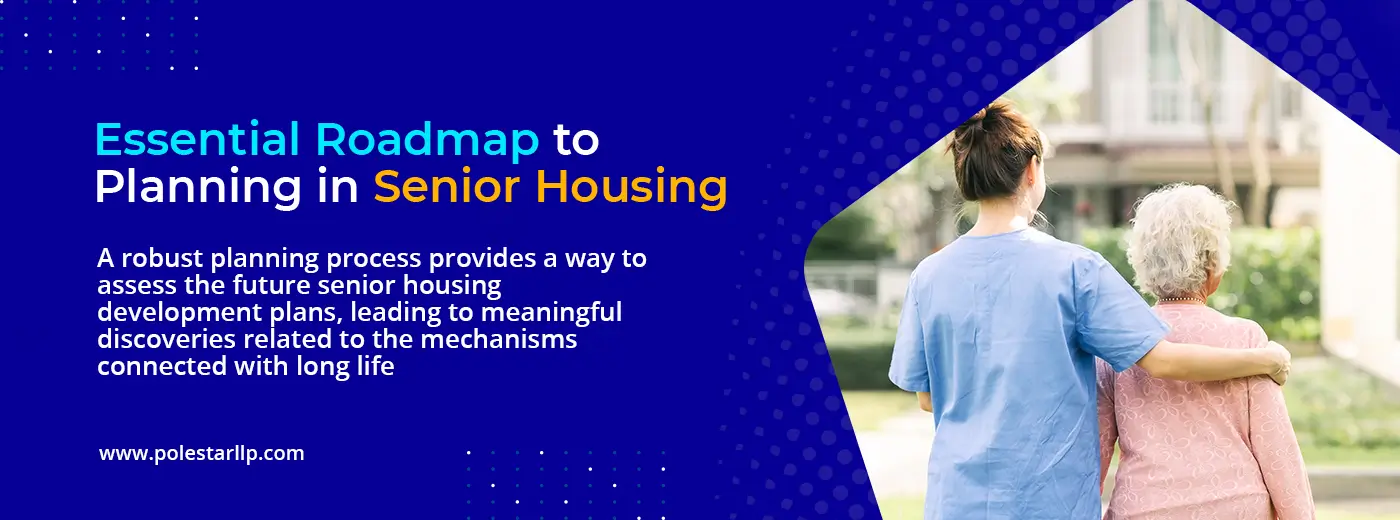
Sign up to receive latest insights & updates in technology, AI & data analytics, data science, & innovations from Polestar Analytics.
As per WHO, "Average global life expectancy increased by 5.5 years between 2000 & 2016, the fastest increase since the 1960s. Greater longevity presents individuals, employers, and policymakers in the US with critical opportunities to assist older citizens to live more productive, purposeful, and satisfying lives. Leading scientists are making progress in tackling diseases concerned with ageing, and innovators are unravelling the ageing process itself, leading to meaningful discoveries related to the mechanisms connected with long life. With numerous people now expected to live into their 80s or beyond, societies are set to benefit from their wisdom, energy, and perspectives.
Baby boomers are pushing the senior living market like no other generation before in the current scenario. Senior living organizations are rethinking all aspects of life for their residents, from activity options to dining experiences. Residents are moving the envelope yet again with the concept of ageing in place.
No matter which industry you are in, having a plan is crucial. Planning allows organisations to plan out the future of business and keep on track while hitting targets. It serves as the guideline and starting point for planning. Developing a reliable plan for Senior Living is critical to determining the project's feasibility. A robust planning process provides a way to assess the future real estate development plan, land utilisation, and configuration. The analysis will also help define the future of this industry. Let's have a look at it.
The first step of a perfect strategic planning process is to conduct a building assessment survey of the current facility to determine required maintenance, stage of the life cycle, efficiency (programmatic and operational), and potential for reuse. This step includes an in-depth review of the exterior of the building, structural analysis, safety code issues, a review of the mechanical and electrical systems, ADA accessibility, and general space allocation.
This phase involves evaluating the existing building and property building location(s) to make sure that it meets the requirements of the staff, residents, and financial performance. Curb appeal and operational efficiency also play a role in this analysis. At this point, it is essential to get feedback from residents and staff and a thorough review of how the spaces function. It is critical to rework and dream about what the existing land and structures can support instead of jumping to the open land or purchasing land.
The construction cost estimations for the concepts that are developed will assist internal staff or an outside professional accountant in creating an economic Financial Feasibility Model. This process will allow you to see the projected financial performance for multiple scenarios, allowing you to make informed decisions on the best route to pursue your organization.
It is essential to tackle data. It is even more significant to convert that data into actionable and useful insights. With the decreased costs of technology and access to new data sources, there are numerous opportunities to think of the "data" that you have as a new currency but may not have figured out how to spend. In its raw format, data is of little value. It is only when compared, aggregated, and interpreted that it becomes an impactful tool to understand the external and internal factors that reduce risk, drive business performance, and form a competitive advantage. Leverage your data to create useful insights and enhance performance.
Now that we know about the planning aspects of the senior housing industry. Let's see the trends.
What trends should Senior Living Facilities be Thinking?
The following actions can assist senior living communities to address current senior housing trends in US and external pressures while maximizing savings and resource efficiency.
Rise of technology and IoT
Facilities must keep pace as a more tech-savvy generation with more connected devices is entering the senior living space. Smart devices can provide residents access to daily menus, schedules, and activities. Wearable devices can track crucial stats and provide one-touch assistance calls. All of this – building management and equipment sensors that can provide real-time updates on resource use – need a robust IoT infrastructure in place.
Growing demand for green living
More residents – including the baby-boom generation now entering the senior living population – seek communities that prioritize sustainability. They want facilities built near transit, access to community green spaces or community gardens, more waste diversion options, and efficiency built into common and individual spaces.
Gain visibility into trends and site consumption
Facilities across portfolios may differ greatly depending on the community's amenities. Capturing data details like- contract terms, sales, equipment, square footage, and more to make the best comparisons of site types and identify real outliers. A robust foundation of data can help identify billing errors, reduce rates, and identify opportunities for reducing energy, water, and waste expenses.
Increased Regulatory Transparency
Senior living facilities face stringent regulations to protect their residents' health, privacy, and safety. As more families demand transparency, a growing number of states have passed legislation to make compliance violations available to the public.
At Polestar Analytics, our team of expert professionals can help you create practical yet achievable plans for the coming times. We provide a broad perspective by considering the market, strategic, financial, operational, and clinical needs, including multi-site facilities, single-site systems, community service providers, and other continuing care and long-term care organizations. Tap our team to help you now.
About Author

Content Architect
The goal is to turn data into information, and information into insights.